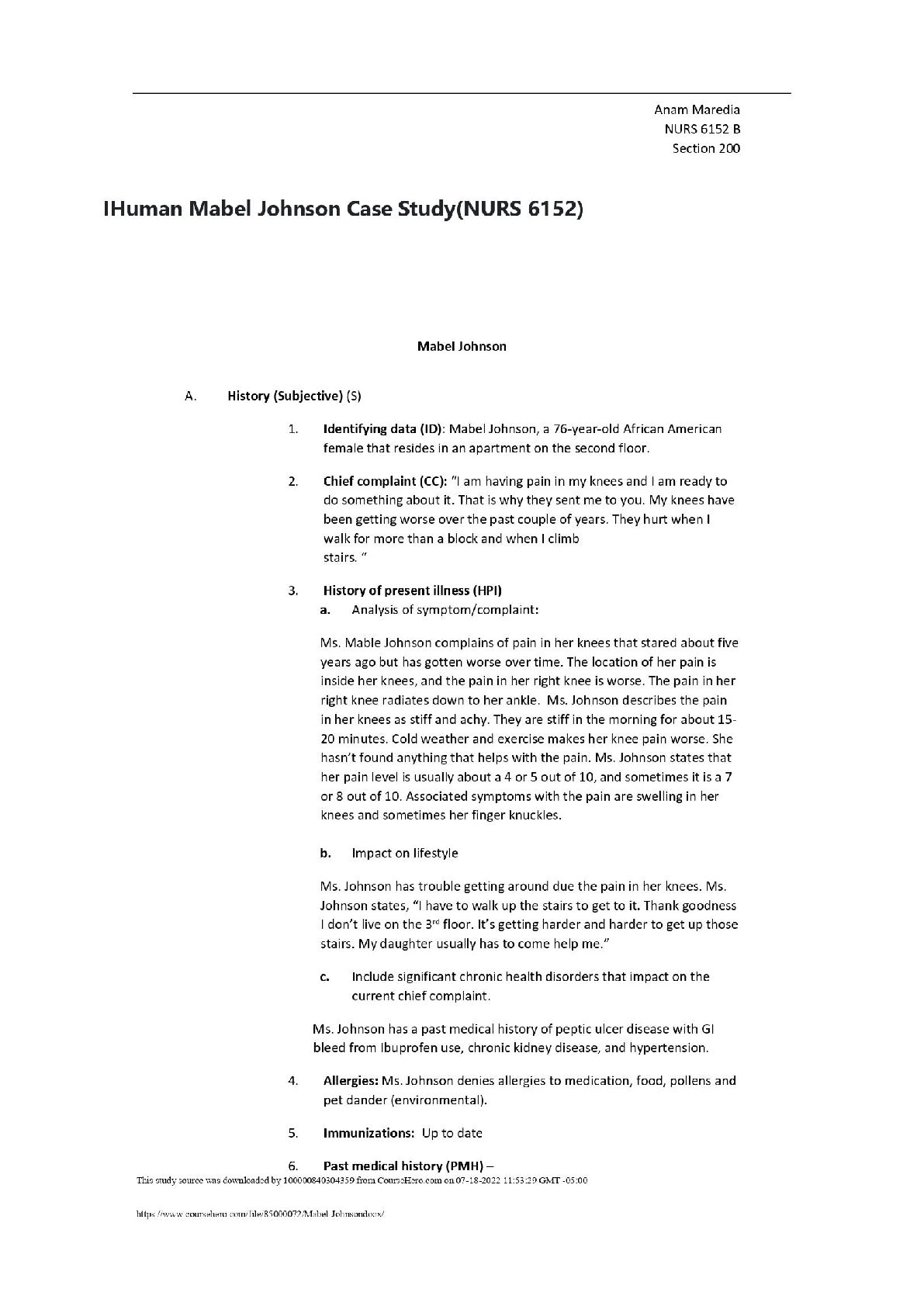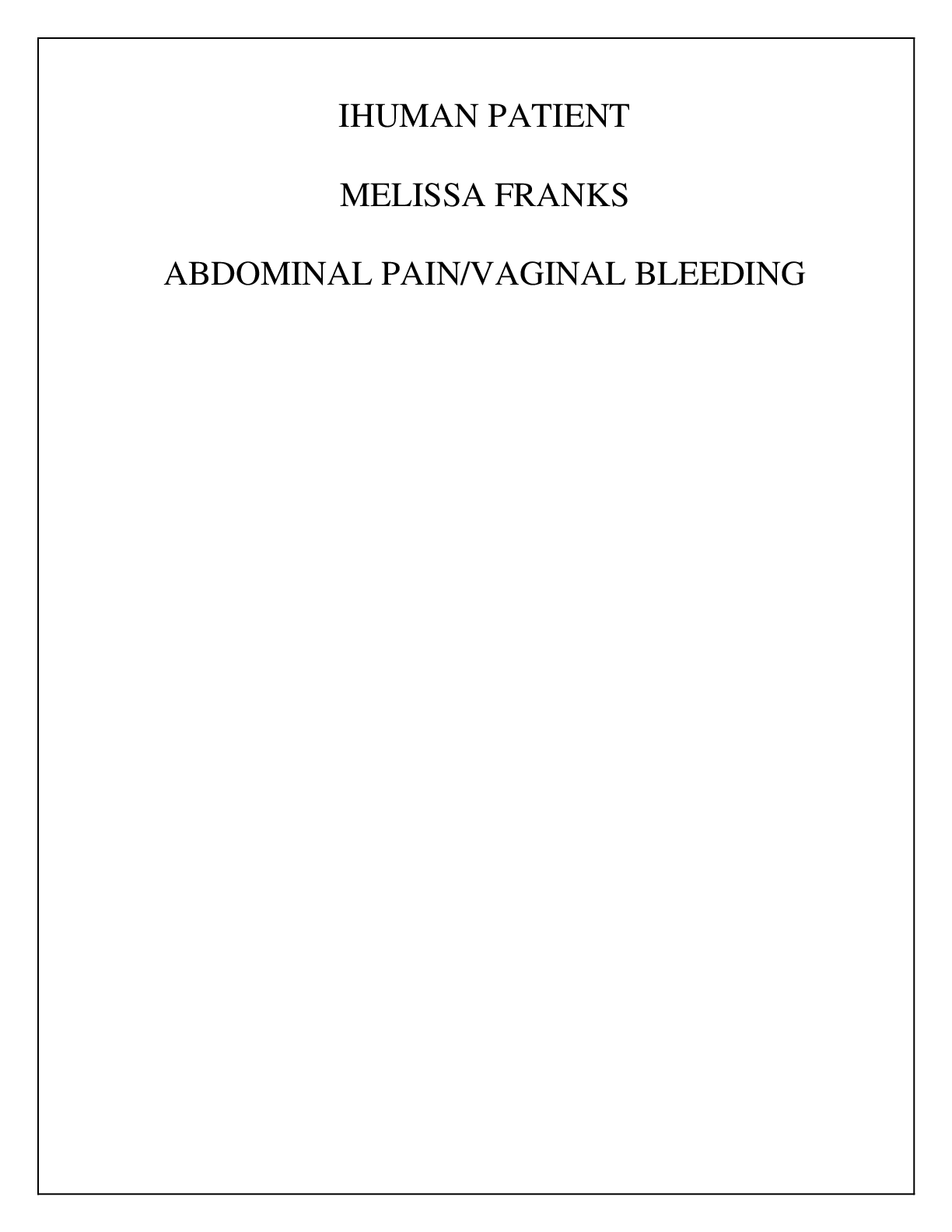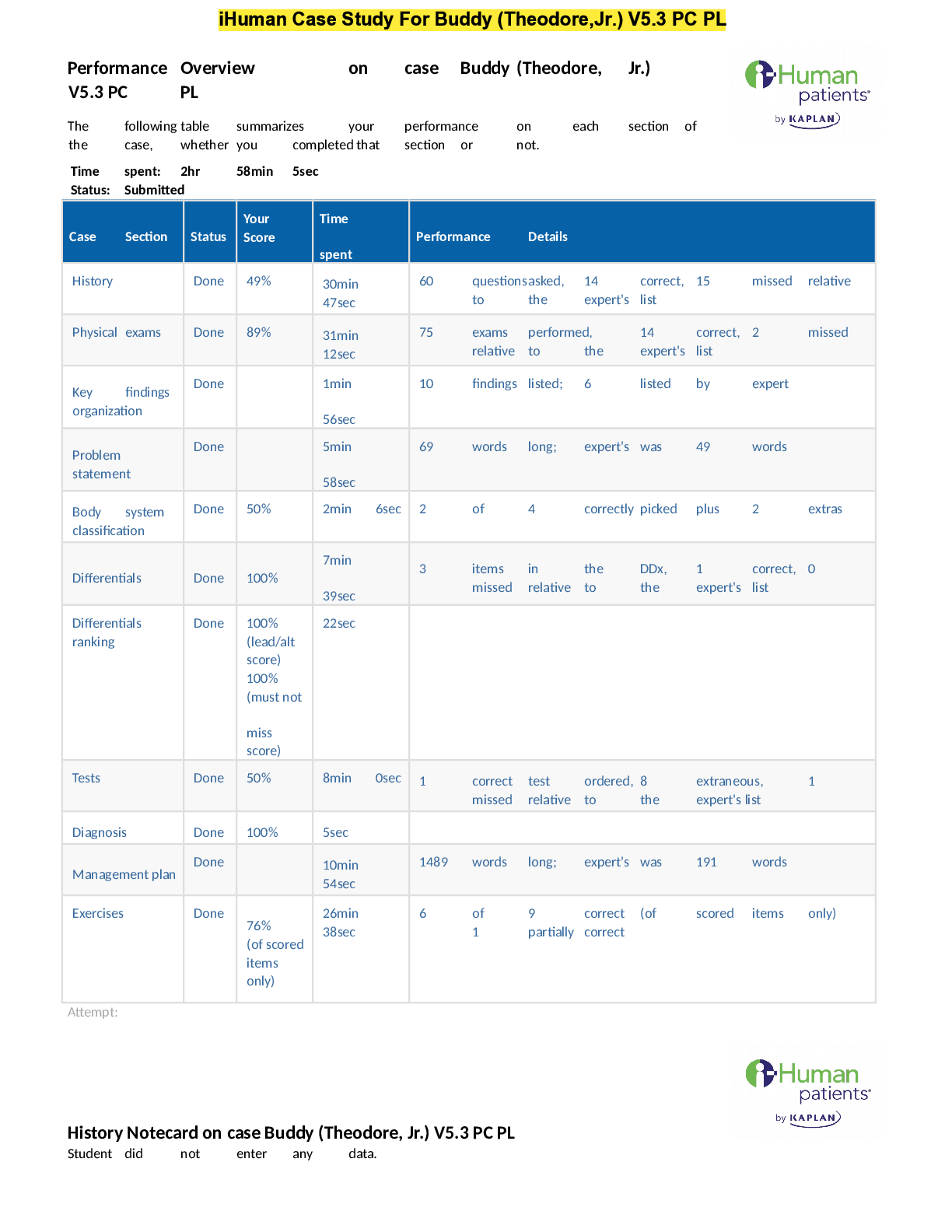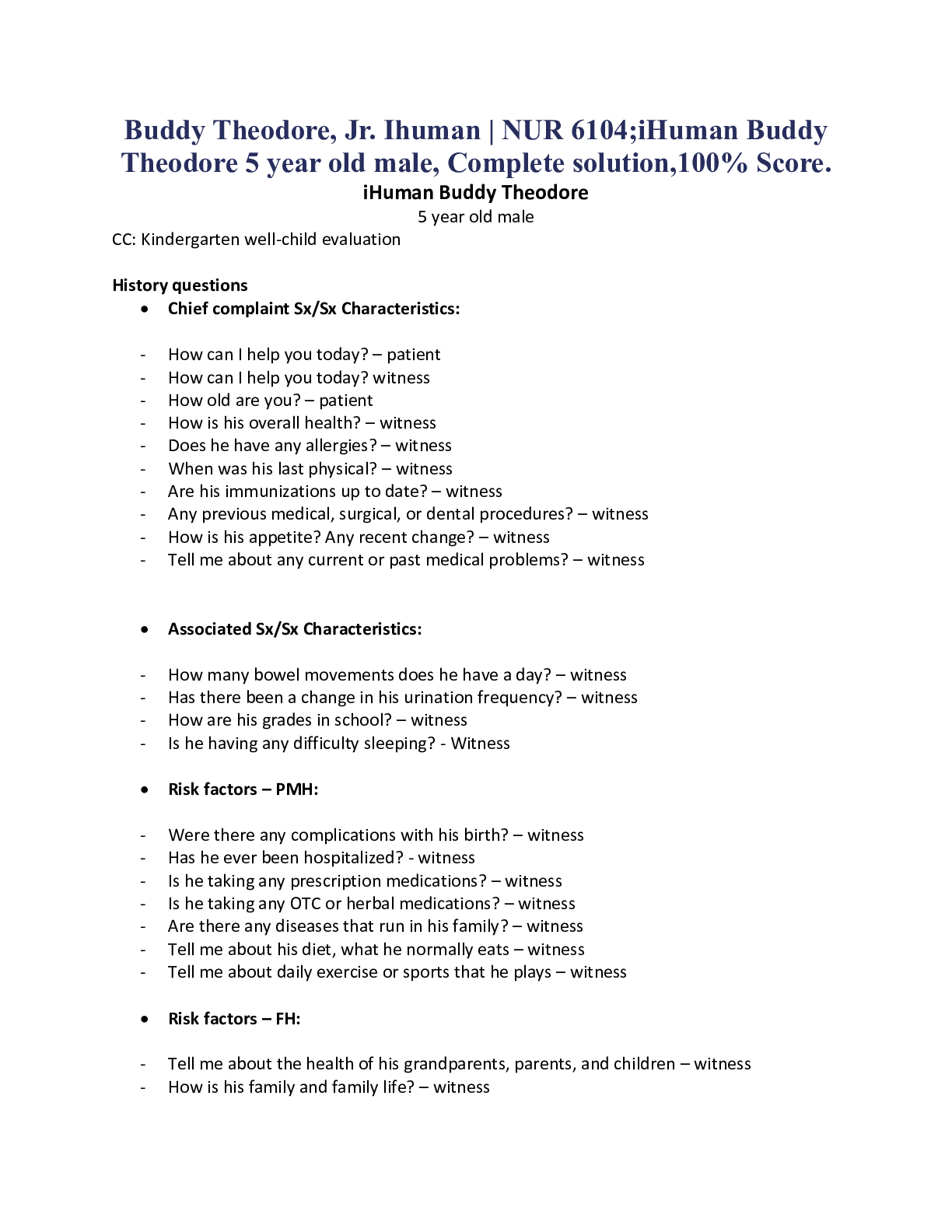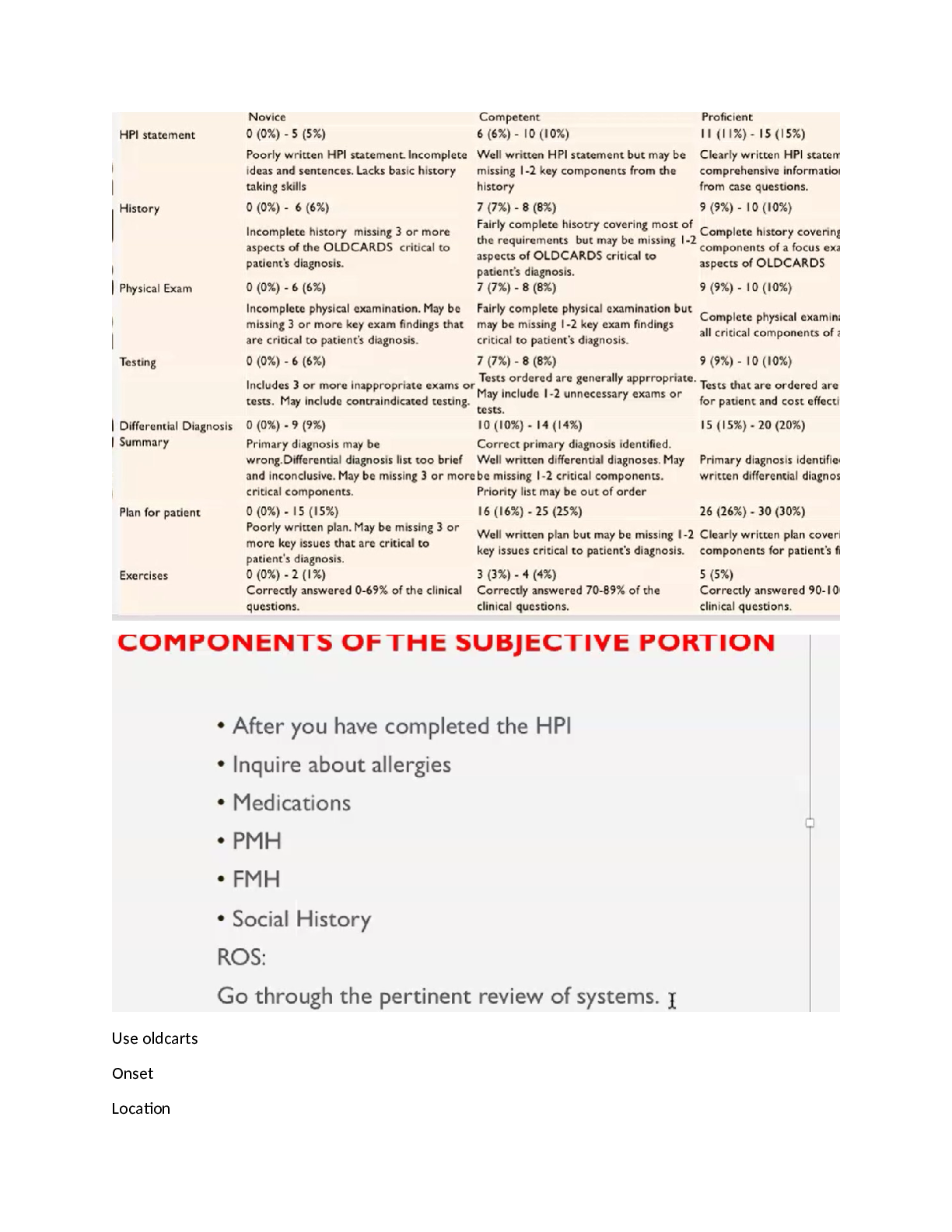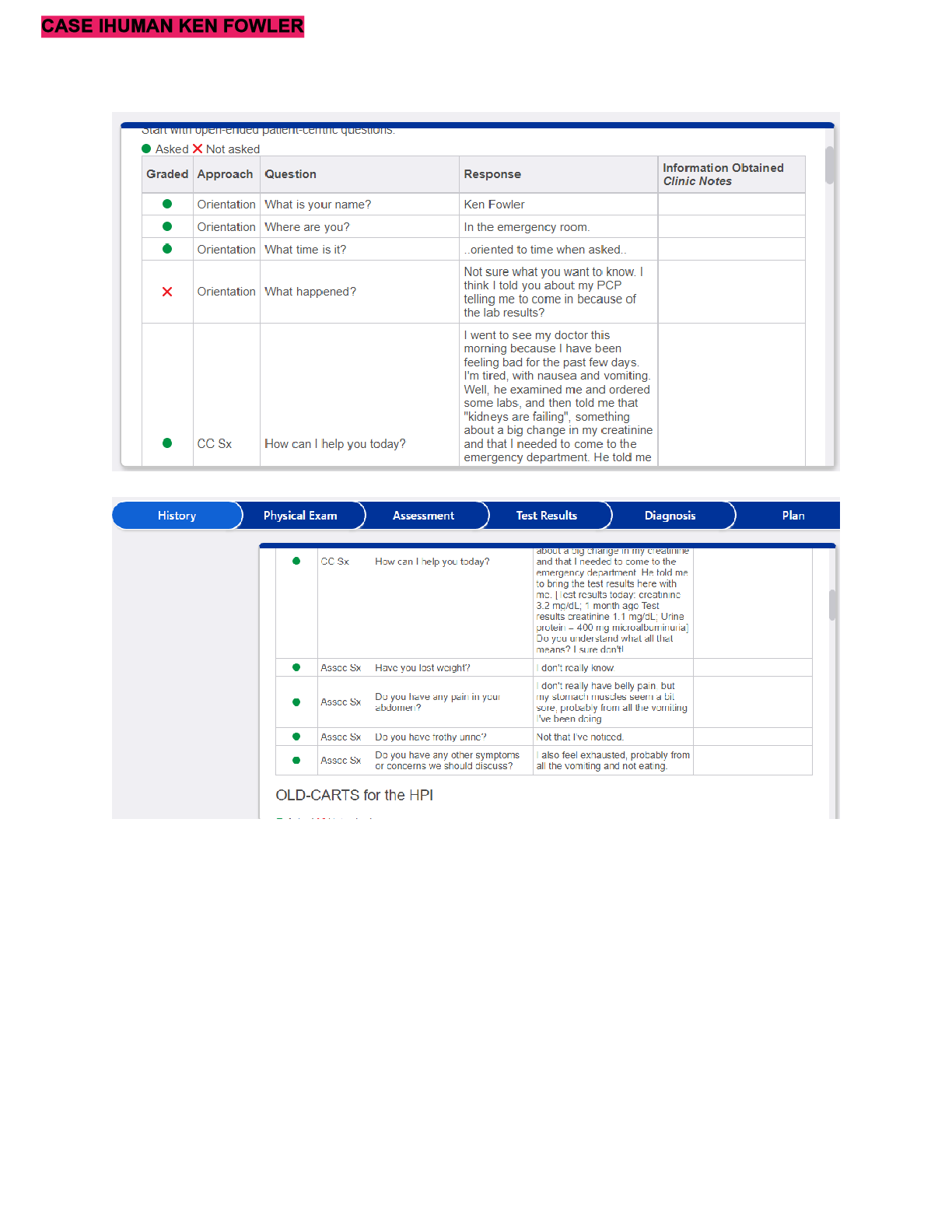*NURSING > iHuman > iHuman Mabel Johnson_Case Study | Evidence-Based Management of Osteoarthritis (All)
iHuman Mabel Johnson_Case Study | Evidence-Based Management of Osteoarthritis
Document Content and Description Below
iHuman Mabel Johnson Case Study Mabel Johnson iHuman Mabel Johnson_Case Study Evidence-Based Management of Osteoarthritis Evidence-Based Management of Osteoarthritis The case expert analysis describes... the different management options for Mabel Johnson's case, osteoarthritis. Apart from the rheumatic condition, Mabel Johnson has co-morbid conditions such as peptic ulcer disease and renal disease. Noninvasive options of treatment are best utilized in this case due to the existence of contraindications to most pharmacological options. The interventions primary aim at improving the quality of life for the patient through the elimination of pain, improvement of muscular functional capacity, increase in muscular size and strength. Physical therapy such as resistance training and aerobic exercise achieve the therapeutic objectives without inflicting further harm or encouraging disease progression. Noninvasive biomechanical interventions such as orthotics and knee braces offer alternative remedies. Some orthotics include elevated wedge insoles while knee braces include valgus-type and sleeve-type knee braces. While braces improve the proprioceptive acuity of the joint, orthotics reduce the load on the joint. Pharmacologic interventions for Mabel Johnson include analgesics such as tramadol or narcotic-type analgesics in combination with NSAIDs like acetaminophen. The presence of gastric and renal insufficiencies preclude the use of COX-2 inhibitors as NSAIDs. Despite having gastric protective properties, COX-2 inhibitors would lead to thromboembolic conditions in the elderly due to their platelet aggregation properties. In end-stage disease, the patient can also consider total or partial joint replacement surgery. Some areas for improvement in the patient encounter include identification of chronic illnesses pre-existing with OA and early initiation of appropriate treatment options. First, it's essential to identify any preexisting conditions such as peptic ulcer disease and kidney diseases in the patient before formulating the treatment plan since the use of some NSAIDs is contraindicated in these conditions. Such drugs include nonselective NSAIDs, for instance, aspirin, that impair the protection of the gastrointestinal tract and increased cardiovascular risk through platelet aggregation. The clinician must also assess the extent and severity of symptoms such as pain and reduced function. Early initiation of low-intensity exercise is instrumental in reducing the pain and improving functional capacity while slowing down disease progression. Utilization of these non-pharmacologic interventions would have avoided the need for knee replacement surgery (Gur, Cakin, Akova, Okay, & Kucukoglu, 2002). Evidence-based techniques such as models of training can help improve clinical skills. Studies have shown that the different types of exercise including concentric- eccentric, isokinetic and concentric training, have unique benefits on the symptoms of osteoporosis (Gur, Cakin, Akova, Okay, & Kucukoglu, 2002). Additionally, the studies also explain the various methods of training. Such exercise procedures can be utilized together with measurement scales to gauge the progression symptoms of OA. Clinical evaluations after every physical therapy session through the use of the Algofuntional Index gauges the presence of side effects like joint effusion and the effectiveness of the intervention (Rogind et al., 1998). Clinical symptoms of OA potentially lead to accidents including falls and reduce the level of activity in the elderly thus impairing the quality of life. Caregivers such as nurses should ensure care to the patients is holistic and unconditional at all times (Gur, Cakin, Akova, Okay, & Kucukoglu, 2002). According to Watson’s caring theory, nurses should make decisions that strengthen human relationships and uphold human dignity (Pajnkihar, Stiglic, & Vrbnjak, 2017). Therefore, nurses are expected to establish good relations with patients with knee OA and continuously encourage them to remain adherent to treatments such as physical therapy. Studies have shown that despite the pain and function impairment in knee OA, patients can remain adherent to moderate physical exercise (Nejati, Farzinmehr, & Moradi-Lake, 2015). The information from Mabel Johnson's case and similar articles offer application concepts that can be utilized in the clinical setup. First, clinicians need to obtain comprehensive histories from patient to help formulate safe and effective treatment plans. Secondly, patient evaluation through physical examination will facilitate grading the severity of disease and thus the potential therapeutic interventions. Finally, all patients present differently. Therefore, clinicians should tailor all treatment models to the specific patient needs to ensure safety and success. An article that aligns the analyzed case above includes: Nejati P, Fatzinger A, Moradi-Lakeh M. The effect of exercise therapy on knee osteoarthritis: a randomized clinical trial. Medical Journals of the Islam Republic of Iran. 2015; 29:186. Published 2015 Feb 25. References Gur, H., Cakin, N., Akova, B., Okay, E., & Kucukoglu, S. (2002). Concentric versus combined concentric-eccentric isokinetic training: effects on functional capacity and symptoms in patients with osteoarthritis of the knee. Archives of Physical Medicine and Rehabilitation, 83(3), 308-316. Nejati, P., Farzinmehr, A., & Moradi-Lake, M. (2015). The effect of exercise therapy on knee osteoarthritis: a randomized clinical trial. Medical Journal of Islamic Republic of Iran, 186. Pajnkihar, M., Stiglic, G., & Vrbnjak, D. (2017). The concept of Watson's carative factors in nursing and their (dis)harmony with patient satisfaction. Peer-Reviewed and Open Access, 5, e2940. doi:10.7717/peerj.2940 Rogind, H., Bibow-Nielsen, B., Jensen, B., Moller, H., Frimodt-Moller, H., & Bliddal, H. (1998). The effects of a physical training program on patients with osteoarthritis of the knees. Archives of Physical Medicine and Rehabilitation, 79(11), 1421- 1427. [Show More]
Last updated: 1 year ago
Preview 1 out of 6 pages

Reviews( 0 )
Document information
Connected school, study & course
About the document
Uploaded On
May 04, 2021
Number of pages
6
Written in
Additional information
This document has been written for:
Uploaded
May 04, 2021
Downloads
0
Views
138

